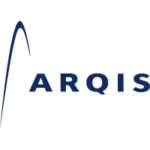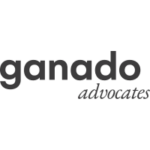-
Does your jurisdiction have an established renewable energy industry? What are the main types and sizes of current and planned renewable energy projects? What are the current production levels? What is the generation mix (conventional vs renewables) in your country?
The primary energy production in Austria is dominated by a remarkably high share of renewable energies. Austria holds a pioneering role internationally, with 87.6% of its domestic primary energy production coming from renewable energy sources. The main contributors are biomass and hydropower, taking advantage of Austria’s topography. However, renewables only account for approximately 36% of Austria’s gross final energy consumption. Recent political efforts and renewable energy promotion have led to the increased importance of other renewables such as wind, geothermal, and solar energy.
In 2023, renewables produced a total of 482.4 petajoules (PJ) of energy. Biomass accounted for 39.3%, hydropower for 30.4%, firewood for 10.3%, wind power for 6%, heat pumps for 4.9%, biogas for 3.0%, solar photovoltaic for 4.5%, solar thermal for 1.4%, and geothermal energy for 0.2%.
In 2023, Austria’s primary energy production comprised 46.1% biogenic energy, 26.6% hydropower, 5.7% ambient heat, 5.3% wind power, 5.1% energy from combustible waste, 4.0% solar energy, 3.6% natural gas, and 3.6% oil.
-
What are the key developments in renewable energy in your country over the last 12 months?
Over the past year, Austria has made significant progress in renewable energy. It exceeded its solar expansion targets, adding 2.2 GW of new capacity, and launched major agrivoltaic projects (dual use of land for agriculture and solar energy production). In addition, hybrid wind–solar initiatives were rolled out to further diversify the energy mix. Exceptionally high-water levels in 2024 also resulted in increased output from run-of-river hydropower plants. Continued investment in wind energy has supported capacity growth, reinforcing Austria’s progress towards its 2030 climate and energy targets.
However, the sharp rise in renewable generation also exposed constraints in the electricity grid. In 2024, surplus solar and wind power had to be transported from the northeast of the country to pumped storage power plants in the west—more frequently than ever before. Consequently, the electricity grid reached its capacity limits on numerous occasions, and renewable generation had to be curtailed due to these grid bottlenecks.
In January 2025, Austria, along with Algeria, Germany, Italy, and Tunisia, signed a joint declaration of intent to develop the “Southern Hydrogen Corridor”. This major infrastructure initiative aims to produce renewable hydrogen in North Africa and transport it via approximately 3,300 kilometres of pipeline to Italy, Austria, and Germany.
-
What are your country's net zero/carbon reduction targets? Are they law or an aspiration?
The European “Green Deal”, based on the Paris Climate Agreement, encompasses various political initiatives aimed at achieving climate protection goals. A key interim target is to reduce greenhouse gas emissions by 55% compared to the period between 1990 and 2030. As part of the EU climate and energy package, Austria committed to increase the share of renewable energy in its national energy mix to 34.0% by 2020. This target was surpassed, with a percentage of 36.5% achieved in 2020. The significant increase in renewable energy from 33.8% in 2019 to 36.5% in 2020 can be attributed to measures implemented during the COVID-19 crisis, particularly the first lockdown’s curfew and travel restrictions, which led to a substantial decrease in fossil fuel consumption in the transport sector by 18.0%.
In June 2019, the EU enacted a comprehensive update of its energy policy framework to facilitate the shift away from fossil fuels towards cleaner energy and to deliver on the EU’s commitments in the Paris Agreement to reduce greenhouse gas emissions. This new energy rulebook, referred to as “Clean Energy for all Europeans Package”, marks a significant step towards the implementation of the union energy strategy, adopted in 2015. The package emphasises energy efficiency, security of supply, renewable energy development, and carbon dioxide reduction.
To align with the new EU energy package, the former Austrian government launched a climate and energy strategy called “#mission2030” in June 2018, which sets out strategies to meet the ambitious 2030 targets. Additionally, the former Austrian government intended to make Austria climate-neutral by 2040. The government programme of the previous Austrian government focused on increasing renewable energy in Austria’s total energy consumption, improving mobility services, implementing infrastructure measures, and decarbonising the road transport fleet. However, it lacked specific steps to achieve these targets. The government programme of the new Austrian government, which was sworn in on 3 March 2025, faces the same issue.
The EU Effort-Sharing Regulation (2018/842/EU) requires a 36% reduction in greenhouse gas emissions outside the EU ETS (EU Emissions Trading System) by 2030 compared to 2005 levels. Within the framework of the EU’s Fit-for-55 Package, which sets more ambitious targets for 2030, Austria’s target increased to 48%. Austria met this target for 2022.
-
Is there a legal definition of 'renewable energy' in your jurisdiction?
Section 5 para. 1 no. 13 of the Renewable Energy Expansion Act (Erneuerbaren-Ausbau-Gesetz) provides a definition for renewable energy. Energy from renewable sources or renewable energy is defined as “energy from renewable non-fossil sources, namely wind, solar (solar thermal and solar photovoltaic) and geothermal energy, ambient energy, tide, wave and other ocean energy, hydropower, energy from biomass, landfill gas, sewage treatment plant gas, biogas and renewable gas“.
-
Who are the key political and regulatory influencers for renewables industry in your jurisdiction? Is there any national regulatory authority and what is its role in the renewable energy market? Who are the key private sector players that are driving the green renewable energy transition in your jurisdiction?
Regulatory policies and decisions concerning the generation of renewable energy in Austria are determined by the Federal Minister for Economy, Energy and Tourism. Regulatory policies and decisions concerning climate and environmental protection are determined by the Federal Minister for Agriculture and Forestry, Climate and Environmental Protection, Regions and Water Management. Both ministers were nominated by the Austrian People’s Party and play a crucial role in implementing climate change measures, promoting the renewable industry, and proposing changes to the legal framework. The other parties in Austria’s current three-party coalition government, which was sworn in on 3 March 2025, are the Social Democratic Party and the NEOS.
E-Control, the regulatory authority for electricity and gas, serves as the regulatory authority for renewable energy and conducts investigations and provides expert opinions on the electricity and gas market and competition. It is also responsible for monitoring the issuance, transfer, and cancellation of guarantees of origin for renewable energy through a computerised database, the so-called “database of guarantees of origin” (Herkunftsnachweisdatenbank). Additionally, E-Control is required to submit the annual Monitoring Report on renewables to the Federal Minister for Economy, Energy and Tourism.
The competence for the regulatory framework governing the funding of renewables is shared between the Federal Minister for Economy, Energy and Tourism, the Federal Minister for Agriculture and Forestry, Climate and Environmental Protection, Regions and Water Management and E-Control. Provincial governments also have a significant influence as they are still competent to determine the locations for wind farms, green field photovoltaic systems, and other renewable projects.
Key players driving the Austrian energy transition in the private sector are energy companies controlled by the federal state or the provinces, such as VERBUND AG, WIEN ENERGIE GmbH, EVN AG, Energie AG Oberösterreich, Energie Burgenland AG, Salzburg AG für Energie, Verkehr und Telekommunikation, Energie Steiermark AG, KELAG-Kärntner Elektrizitäts-Aktiengesellschaft, TIWAG-Tiroler Wasserkraft AG, and illwerke vkw AG. There are also privately owned companies, for example oekostrom AG energy group, ImWind Erneuerbare Energie GmbH, and CLEEN Energy AG. Additionally, numerous small undertakings are active in the renewable energy sector, especially since the Renewable Energy Expansion Act (Erneuerbaren-Ausbau-Gesetz) entered into force.
-
What are the approaches businesses are taking to access renewable energy? Are some solutions easier to implement than others? If there was one emerging example of how businesses are engaging in renewable energy, what would that be? For example, purchasing green power from a supplier, direct corporate PPAs or use of assets like roofs to generate solar or wind?
What we observe is that the approach to renewable energy adoption varies depending on the industry, existing solutions, and local circumstances. For instance, many players of the strong Austrian paper industry have already implemented waste heat cogeneration plants several years ago to cover their high demand for heat and electricity. Meanwhile, the Austrian steel industry is undertaking a transition from coal and natural gas to hydrogen as part of its efforts to achieve net-zero emissions. In this context, Austria’s largest steel producer plans to install two electric arc furnaces to decarbonize its energy-intensive production processes. These furnaces are expected to cut its greenhouse gas emissions by approximately 30% by 2029.
Many industries, both large and small, are undertaking photovoltaic projects either on their own premises or through contracting models, either on-site or in nearby locations. For small businesses, procuring “green energy” from regular suppliers is often more convenient, as they may lack the resources to implement their own renewable energy systems.
An emerging trend is the active involvement of large businesses and industries in the installation of on-site photovoltaic systems. A notable example is Vienna’s airport, which has made significant investments in photovoltaic systems on rooftops and greenfield areas adjacent to the runways. Consequently, the airport can now meet approximately 30% of its electricity needs through these installations.
Additionally, businesses increasingly enter into Power Purchase Agreements (PPAs) for several reasons. PPAs provide a secure basis for financial planning, as they guarantee the purchase of generated renewable power for several years at a fixed price. Alternatively, upper and lower price limits can be set. These bilateral agreements offer a high degree of customisation, allowing for clauses such as “take-or-pay” or “take-as-produced”. Additionally, businesses can enhance their image by purchasing green energy.
-
Has the business approach noticeably changed in the last year in its engagement with renewable energy? If it has why is this (e.g. because of ESG, Paris Agreement, price spikes, political or regulatory change)?
According to a survey conducted among the largest companies in Austria, sustainability is already incorporated into their corporate strategies. Three out of five companies have fully integrated a sustainability concept into their strategies, while every third company has done so partially. However, only about half of the surveyed executives were able to provide specific information about their goals for achieving climate neutrality.
Nevertheless, climate change and the need for policy changes are increasingly becoming part of companies’ day-to-day operations. Price spikes associated with the conflict in Ukraine and considerations regarding security of supply also play a significant role in making business decisions.
-
How visible and mature are discussions in business around reducing carbon emissions; and how much support is being given from a political and regulatory perspective to this area (including energy efficiency)?
Approximately one third of Austria’s carbon emissions are included in the EU ETS (EU Emissions Trading System), which is aimed at reducing emissions by assigning a cost to them. As a result, major industrial players in Austria have implemented measures to minimise carbon emissions to avoid the expenses associated with carbon emission certificates. In line with this, Austria introduced a carbon tax on fossil fuels starting from 1 October 2022, which increases the cost of fuel and serves as an incentive to shift to non-hydrocarbons.
The Directive 2018/2002/EU on energy efficiency sets rules and obligations to achieve the EU’s 2020 and 2030 energy efficiency targets. Austria faced significant delays in transposing this Directive. Consequently, the European Commission initiated infringement procedures against Austria in late 2020. Political disagreements within the government have been the cause of this substantial delay. The former Austrian government was unable to reach an agreement on the specific legal text. It took twelve versions before the government bill was finally ready to be lodged with the National Parliament. In December 2023, the European Commission closed the infringement procedures initiated against Austria. Directive 2023/1791/EU, a recast of Directive 2018/2002/EU, was published in the Official Journal of the European Union on 20 September 2023. Its general targets must be transposed by 11 October 2025, with specific ones due by 15 May 2024.
-
How are rights to explore/set up or transfer renewable energy projects, such as solar or wind farms, granted? How do these differ based on the source of energy, i.e. solar, wind (on and offshore), nuclear, carbon capture, hydrogen, CHP, hydropower, geothermal; biomass; battery energy storage systems (BESS) and biomethane?
The Electricity Sector Act (Elektrizitätswirtschafts- und -organisationsgesetz 2010) provides the regulatory framework for the generation, transmission, distribution, and supply of electricity, as well as the organisation of the electricity industry. It also supports the development of electricity generation from renewables and ensures grid access for renewables.
The Renewable Energy Expansion Act (Erneuerbaren-Ausbau-Gesetz) incorporates the European Union’s goal of covering at least 32% of gross final energy consumption with renewables and Austria’s aim for climate neutrality by 2040. This law provides rules for renewable energy funding (a market premium and investment grants), regulations for renewable energy communities, guarantees of origin for renewables, and an integrated Austrian network infrastructure plan.
Since Austria is still dominated by federalism, Austria’s federal system grants its nine provinces extensive legislative authority in many areas (e.g., building law, regional planning law). Additionally, each province enacts its own Electricity Act in accordance with the framework legislation in the electricity sector.
Renewable energy facilities generally require a construction permit (Baugenehmigung) to comply with regional building codes. However, the differences in the provinces range from complete exemption (from the permit necessary or from the scope of application of the respective provincial building regulations), to the exemption from authorisation (if a permit under the regional Electricity Law is required), to a simple-notification procedure up to a permit requirement.
Furthermore, renewable energy systems must comply with provincial planning regulations (i.e., zoning, provincial development, and planning purposes) as well as municipal regulations aimed at protecting the landscape (Ortsbildschutz).
Moreover, a permit under the respective provincial Electricity Act (elektrizitätsrechtliche Bewilligung) may be required. Due to different provincial laws, the prerequisites for acquiring a permit to generate, transmit, and distribute renewable electricity (i.e., permit requirement, simple‑notification procedure, or complete exemptions) differ across provinces. Typically, both the type of permit and the permit procedure required under the respective provincial Electricity Act depend on the maximum capacity (Engpassleistung) of the respective renewable energy system. Nevertheless, facilities subject to authorisation under trade law (Betriebsanlagengenehmigungsausnahme gemäß § 12 Abs 2 Elektrizitätswirtschafts- und -organisationsgesetz 2010) are exempt from any permit or notification obligations.
Hydropower facilities require a permit under the Water Act (Wasserrechtsgesetz 1959).
Environmental impact assessments may be required for hydropower, wind, geothermal, and biomass facilities, depending on factors such as size and maximum output.
Biomass plants may require a permit under the Waste Management Act (Abfallwirtschaftsgesetz 2002).
Geothermal plants require a permit in accordance with the Water Act (Wasserrechtsgesetz 1959). Each province defines areas where such permits are obligatory. Outside of these areas no such permits are required.
-
Is the government directly involved with the renewables industry (auctions etc)? Are there government-owned renewables companies or are there plans for one?
The primary electricity companies in Austria are predominantly owned by the federal state or the federal provinces, with the majority of shares held by these public entities. These companies are actively involved in the renewable energy sector. For example, the federal state holds a 51% stake in VERBUND AG, one of the largest suppliers of electricity generated from hydropower. Similarly, the province of Tyrol fully owns TIWAG (Tiroler Wasserkraft AG), another company operating in the hydropower sector. Apart from these electricity companies, there are no other government-owned renewable energy companies in Austria.
-
What are the government’s plans and strategies in terms of the renewables industry? Please also provide a brief overview of key legislation and regulation in the renewable energy sector, including any anticipated legislative proposals?
The former EU target of achieving 32% of the EU’s gross final energy consumption from renewable energy is obsolete. The EU’s comprehensive legislative package “Fit for 55” not only aims to fulfil the requirements of the European Climate Change Act but also strives to increase the renewable energy share to 40%. However, this target evolved. According to the amendment to the Renewable Energy Directive (RED III), the share of renewable energy sources in the EU’s total energy consumption is set to increase to 42.5% by 2030. Additionally, this amendment introduces an indicative target for an additional increase of 2.5%, reaching a share of 45%.
Regarding gross final energy consumption, Austria set a target in 2018 through the government initiative #mission2030 to increase the share of renewable energies to between 45% and 50% by 2030. To accomplish this objective, substantial measures are necessary, with a primary focus on the electricity sector. As outlined in Section 4 para. 2 of the Renewable Energy Expansion Act (Erneuerbaren-Ausbau-Gesetz), Austria aims to source 100% of its total electricity consumption from renewable energy sources starting in 2030. Additionally, pursuant to Section 4 para. 1 Renewable Energy Expansion Act, Austria aims to achieve climate neutrality by 2040.
Additionally, the former Austria government launched other initiatives to shift away from fossil fuels, for instance regarding the objective of reducing reliance on oil and gas. The initiative “Away from Oil and Gas” was aimed at assisting consumers, municipalities, and businesses in transitioning from oil-fired and gas-fired heating systems to renewable energy alternatives. Currently, there are approximately 600,000 oil-fired heating systems in Austria, accounting for around 14% of all heating systems. The “Away from Oil and Gas” promotion campaign was part of a comprehensive effort to restructure companies and individuals towards more sustainable options. The newly elected Austrian government must now decide whether this campaign will be continued. Besides that, Austrian provinces offer their own subsidy programmes to support the adoption of eco‑friendly heating systems.
The Austrian Electricity Sector Act (Elektrizitätswirtschafts- und Organisationsgesetz 2010) centrally governs the Austrian electricity supply and has been in effect for over two decades. Currently, the competent ministry is working on a “more modern” version of this law, the Electricity Act (Elektrizitätswirtschaftsgesetz). According to the latest consultation draft, this law will transpose the Renewable Energy Directive 2018/2001/EU (RED II) and the Electricity Market Directive 2019/944/EU. Additionally, it will strengthen consumer protection rights and regulations to promote participation in the energy market, such as facilitating the sale of self-generated electricity to end-consumers through peer-to-peer agreements. The new provisions will also address risk provisioning in the electricity sector and refine the transposed provisions of REMIT (Regulation 1227/2011/EU on wholesale energy market integrity and transparency). Furthermore, measures to combat energy poverty will be incorporated. It is expected that this law will eliminate any ambiguities currently present in Austrian electricity law. The new Austrian Electricity Act is eagerly anticipated. The new Austrian government, which was sworn in on 3 March 2025, intends to enact the Electricity Act by summer 2025.
In January 2023, the former Austrian government published the key provisions of the Renewable Energy Expansion Acceleration Act (Erneuerbaren-Ausbau-Beschleunigungsgesetz). This legislation aims to expedite the growth of renewable energies by streamlining the permitting process for renewable energy projects, district heating and cooling networks, and hydrogen networks. Additionally, it will enhance opportunities for zoning and spatial planning. The Renewable Energy Expansion Acceleration Act will align with the objectives set out in the REPowerEU Package, including the establishment of designated “Go-To Areas” for renewable energy projects. However, the publication date of the consultation draft for this law remains uncertain. The new Austrian government, which was sworn in on 3 March 2025, intends to enact the Renewable Energy Expansion Acceleration Act by summer 2025.
In February 2024, the Council of Ministers of the former government passed a draft of the Green Gas Act (Erneuerbares-Gas-Gesetz). The draft legislation aimed to gradually replace a certain proportion of natural gas with renewable gas in the future (Grün-Gas-Quote). However, the government programme of the newly elected Austrian government only outlines a market premium model instead of the Grün-Gas-Quote intended by the previous government.
The Renewable Heat Act (Erneuerbaren-Wärme-Gesetz), which is part of the Austrian Heat Strategy, entered into force at the beginning of 2024. The initial draft of the Renewable Heat Act outlined plans to phase out coal heating systems by 2035, followed by the complete decommissioning of all fossil-powered gas heating systems by 2040. However, the law currently in force solely focuses on the prohibition of fossil-powered central or decentralised heating systems in new buildings by 2024. Some experts in the energy sector have vehemently criticised this shift in approach, denoting it as a backward step that jeopardises Austria’s target of achieving climate neutrality by 2040. Under the newly elected Austrian government, it appears unlikely that the Renewable Heat Act will be revised to include a complete phase-out of all fossil-fuelled gas heating systems by 2040.
For a comprehensive summary of the key legislation concerning renewables, please also refer to question 9.
-
Are there any government incentive schemes promoting renewable energy (direct or indirect)? For example, are there any special tax deductions or subsidies (including Contracts for Difference) offered? Equally, are there any disincentives?
In principle, the Renewable Energy Expansion Act (Erneuerbaren-Ausbau-Gesetz) provides three support mechanisms: market premiums based on tendering procedures, market premiums based on applications, and investment grants. Before the Renewable Energy Expansion Act, the Green Electricity Act 2012 (Ökostromgesetz 2012) offered support to producers of renewable energy through feed-in tariffs based on contracts with the Green Electricity Settlement Agency, referred to as OeMAG. Under the Renewable Energy Expansion Act, OeMAG is no longer obligated to purchase the generated electricity from renewable energy sources. Hence, the electricity producers must market the electricity themselves.
The market premium represents the subsidy that can be obtained for the electricity from renewables which is sold and fed into the public grid. Therefore, this subsidy aims to compensate for the difference fully or partially between the production costs of electricity from renewables and the average market price for electricity for a certain period. It is calculated from the difference between the value to be applied in cents per kWh determined in the context of a tendering procedure or established by ordinance and the respective reference market value or reference market price in cents per kWh. A market premium can be obtained through a tendering procedure for photovoltaic, hydropower, wind, biomass, and green gas facilities. For 2025, the annual tender volumes are 700,000 kW peak for photovoltaic, 7,500 kW for biomass, 500,000 kW for wind power, and 40,000 kW for joint tenders for wind and hydropower installations. Administered market premiums have lower tender volumes and may not be available for all mentioned renewable sources. The market premium is typically paid out monthly by the competent body, the Renewables support management entity (EAG-Förderabwicklungsstelle). OeMAG has been appointed as competent body and is therefore entrusted to fulfil the task of the Renewables support management entity.
Investment grants support the construction, revitalisation, and expansion of photovoltaic, hydropower, wind power, biomass, and green gas facilities. These grants are awarded through subsidy calls (Fördercalls) with a limited application timeframe, following the “first come, first served” principle. The details of investment grants are outlined in ordinances issued by the Federal Minister for Economy, Energy and Tourism in agreement with the Federal Minister for Agriculture and Forestry, Climate and Environmental Protection, Regions and Water Management. However, investment grants were not applicable to smaller photovoltaic systems in 2024. In January 2024, Austria joined other EU member states in reducing the VAT to 0% for all photovoltaic systems (including modules and storage units) with an output of up to 35 kW peak. This reduction covered both component purchases and installation costs. The VAT exemption specifically targeted photovoltaic systems installed on buildings used for housing, non-profit purposes, or by public entities. The aim of this measure was to facilitate the promotion of photovoltaic systems by eliminating the funding process. The VAT exemption was initially scheduled to remain in place until 31 December 2026. However, due to a budget deficit, the new Austrian government has decided to withdraw it early. The exemption will now cease to apply from 1 April 2025.Consequently, operators of photovoltaic systems will once again have to rely on investment grants under the Renewable Energy Expansion Act.
Further to the funding on federal level, there are funding programmes for renewables and energy efficiency at provincial level.
In addition, end-users of self-produced renewable energy are exempted from electricity tax (Elektrizitätsabgabe). This also applies to the consumption within renewable energy communities.
-
How does the structure of the natural gas industry in your country impact the price of electricity? Are there any plans to de-link the price of renewable electricity from gas prices?
In Austria, the structure of the natural gas industry plays a significant role in influencing electricity prices, as gas-fired power plants contribute notably to Austria’s gross final electricity consumption. While Austria relies on renewable energy, its electricity market is integrated into the broader European system. Consequently, wholesale electricity prices are determined by the most expensive marginal source of generation under the Merit Order system– often natural gas, particularly during periods of high demand or low renewable output.
The sharp rise in natural gas prices following the 2022 energy crisis led to a spike in electricity costs in Austria, despite its substantial share of renewables. This triggered public and political pressure for reform of the pricing mechanism at the EU level, in particular the Merit Order system. In response, Austria joined wider EU discussions on decoupling electricity prices from gas prices. In 2023, the former Austrian government supported EU-level reforms aimed at redesigning the market to more accurately reflect the actual mix of electricity sources. These proposals included the promotion of long-term contracts and Contracts for Difference (CfDs) for renewable energy. However, these discussions have since stalled at the EU level, as the immediate impact of the 2022 energy crisis has diminished.
-
What are the significant barriers that impede both the renewables industry and businesses' access to renewable energy? For example, permitting, grid delays, credit worthiness of counterparties, restrictions on foreign investment, regulatory constraints on acquisitions; disputes/challenges?
The first major challenge lies in gaining public acceptance, which is crucial for the implementation of energy projects. Any opposition can significantly delay the permitting process by several years and render it economically unviable. A prime example of such delays is the construction of the Salzburg power line, a project undertaken by APG, the Austrian Transmission System Operator. In 2012, APG filed an application for the approval of a 380 kV power line under the Environmental Impact Assessment Act. However, several municipalities and citizen movements immediately appealed the decision of the Federal Administrative Court (BVwG). Their appeal was not against the power line itself but rather focused on the demand for underground cabling to prevent significant environmental damage. After a comprehensive 295-page (!) decision in late 2020 (!), the Supreme Administrative Court (Verwaltungsgerichtshof) dismissed all appeals, allowing the construction work to resume.
Another obstacle is the territorial planning procedure, especially for wind farms and photovoltaic plants. In Austria’s federal system, each provincial government is responsible for determining zoning and spatial planning. As a result, the federal government has no real authority in these matters, as land-use planning falls under the jurisdiction of the individual provinces.
Another key challenge is the insufficient capacity of the electricity grid, occurring alongside a rapid increase in renewable generation. In several instances throughout 2024, renewable output had to be curtailed due to transmission bottlenecks.
-
What are the key contracts you typically expect to see in a new-build renewable energy project?
The primary goal of key contracts is to secure the necessary land for specific projects. Typically, a contract is concluded between the landowner and the project developer. For photovoltaic systems, easement or rental contracts are often used to obtain the necessary area. In such cases, a contractor usually constructs, develops, and operates the photovoltaic system on behalf of the property owner. For households, these contracts generally stipulate that the homeowner is the main user and operator of the rooftop photovoltaic plant, as self-consumption of renewable energy is exempt from electricity tax.
Additionally, Power Purchase Agreements (PPAs) play a key role in this area as they provide a secure basis for financial planning by securing the purchase of generated renewable power for several years at a fixed price.
-
Are there any restrictions on the export of renewable energy, local content obligations or domestic supply obligations? What are the impacts (either actual or expected) of the implementation of the Net Zero Industry Act (EU) Regulation 2024/1735?
There are no restrictions to that effect.
Regulation 2024/1735/EU, referred to as the Net-Zero Industry Act, intends to strengthen European manufacturing capacity for net-zero technologies and their key components. It is designed to enhance the competitiveness of the net-zero technology sector and to support the transition to clean energy. According to a recent report by the Federal Minister for Economy, Energy and Tourism, which outlines measures at the EU level along with Austria’s corresponding position, work is currently underway to implement the Regulation and its associated measures at national level. Several government departments with the required expertise are cooperating to transpose those provisions of the Regulation that require transposition at national level.
To promote European value creation, Austria has already introduced a measure in this context. Under the Renewable Energy Expansion Act, investment grants for photovoltaic systems are increased by up to 20% if they are built using technical components with European value added (including the EEA and Switzerland). Investment grants for electricity storage systems are raised by up to 10% if the systems originate from European value creation (including the EEA and Switzerland).
-
Has deployment of renewables been impacted in the last year by any non-country specific factors: For example, financing costs, supply chain or taxes or subsidies (e.g. the US's Inflation Reduction Act)?
In general, the deployment of renewables has not been affected by any non-country specific factors. However, the increasing global demand for photovoltaic system components has led to delivery shortages in Austria.
-
Could you provide a brief overview of the major projects that are currently happening in your jurisdiction?
One of the key renewable projects in progress is the research project “GeoTief Wien“, which currently takes place in the eastern area of Vienna. During drilling operations for oil and gas in 1974, no fossil fuel sources were found, but instead, a significant hot water reservoir was discovered directly beneath Vienna. Preliminary estimates suggest that this geothermal energy source could potentially provide district heating for up to 125,000 Viennese households in the future.
One of Europe’s largest agrivoltaic-wind projects is currently under construction in the district of Neusiedl am See, Burgenland. The project entails the development of an agrivoltaic plant with a planned capacity of up to 164 MW, covering 180 hectares of agricultural land. This dual-use approach enables continued agricultural activity while simultaneously producing solar energy. The photovoltaic installation is ultimately intended to be integrated with an existing wind farm.
Another major project is the “Underground Sun Storage” by RAG Austria AG, Austria’s largest energy storage company. This ground-breaking initiative involves the world’s first underground pore storage facility for hydrogen. Through electrolysis, solar energy is converted into green hydrogen, which is then stored in its pure form in an underground natural gas reservoir located in Gampern, Upper Austria. The storage facility’s capacity is equivalent to the surplus energy generated by approximately 1,000 photovoltaic systems installed on single-family homes during the summer. This excess energy is stored during the summer months and can be utilized during winter to generate electricity and heat.
-
How confident are you that your jurisdiction can become a leader in newer areas like offshore wind or hydrogen?
With its significant hydropower production and the need to find an alternative energy source to replace natural gas or coal in energy-intensive industrial processes, hydrogen has become a top priority for the energy sector and the industrial players. In response, the former Austrian government presented a hydrogen strategy in 2022 to address these challenges. The strategy outlines the following objectives:
- By 2030, Austria aims to install 1 GW of electrolysis capacity. The strategy assumes a utilisation rate of 50%, which amounts to approximately 4.35 TWh.
- Replace 80% of hydrogen currently produced from fossil sources with green hydrogen by 2030. With the mentioned capacities, this target should be achievable.
- Looking ahead to 2040, the projected hydrogen demand is expected to be 67-75 TWh. Out of this demand, hydrogen alone could meet 16-25 TWh. The strategy suggests that the remaining demand could be met by methane. However, the expansion plan beyond 2030 remains unclear, as no specific targets have been set.
To achieve these ambitious goals, the former Austrian government has implemented various funding opportunities for the construction of necessary facilities and research in this field. Given the full commitment of all key players, including the energy industry, large energy-consuming industries, and the government, we are confident that Austria will emerge as a leader in hydrogen technology. In this context, the Austrian regulatory authority for electricity and gas (E-Control) has published a discussion paper outlining the key points of a hydrogen market model. Relevant market participants are now invited to submit their responses to the outlined key points.
-
How are renewables projects commonly financed in your jurisdiction?
Projects for households are privately financed, utilising various subsidy schemes that the Austrian federal and provincial governments have bolstered in recent years to promote renewable energy initiatives. Corporate projects, on the other hand, are financed either directly by the company or by major investors.
-
What is your forecast for the coming year(s) for renewable energy in your jurisdiction?
Austria’s renewable energy sector is set for substantial growth in the coming years, underpinned by strong government commitment and policies designed to achieve climate neutrality by 2040. The expansion of hydropower, wind, and solar capacity will play a crucial role in sustainably meeting rising electricity demand. Upcoming legislative measures are expected to further stimulate investment and innovation. Additionally, closer cooperation within the EU will help facilitate the development and market integration of renewables. Although challenges such as grid upgrades and permitting persist, the planned reforms should address these issues effectively. Overall, Austria is well positioned to significantly increase its share of renewable energy, contributing meaningfully to Europe’s broader clean energy transition.
Austria: Renewable Energy
This country-specific Q&A provides an overview of Renewable Energy laws and regulations applicable in Austria.
-
Does your jurisdiction have an established renewable energy industry? What are the main types and sizes of current and planned renewable energy projects? What are the current production levels? What is the generation mix (conventional vs renewables) in your country?
-
What are the key developments in renewable energy in your country over the last 12 months?
-
What are your country's net zero/carbon reduction targets? Are they law or an aspiration?
-
Is there a legal definition of 'renewable energy' in your jurisdiction?
-
Who are the key political and regulatory influencers for renewables industry in your jurisdiction? Is there any national regulatory authority and what is its role in the renewable energy market? Who are the key private sector players that are driving the green renewable energy transition in your jurisdiction?
-
What are the approaches businesses are taking to access renewable energy? Are some solutions easier to implement than others? If there was one emerging example of how businesses are engaging in renewable energy, what would that be? For example, purchasing green power from a supplier, direct corporate PPAs or use of assets like roofs to generate solar or wind?
-
Has the business approach noticeably changed in the last year in its engagement with renewable energy? If it has why is this (e.g. because of ESG, Paris Agreement, price spikes, political or regulatory change)?
-
How visible and mature are discussions in business around reducing carbon emissions; and how much support is being given from a political and regulatory perspective to this area (including energy efficiency)?
-
How are rights to explore/set up or transfer renewable energy projects, such as solar or wind farms, granted? How do these differ based on the source of energy, i.e. solar, wind (on and offshore), nuclear, carbon capture, hydrogen, CHP, hydropower, geothermal; biomass; battery energy storage systems (BESS) and biomethane?
-
Is the government directly involved with the renewables industry (auctions etc)? Are there government-owned renewables companies or are there plans for one?
-
What are the government’s plans and strategies in terms of the renewables industry? Please also provide a brief overview of key legislation and regulation in the renewable energy sector, including any anticipated legislative proposals?
-
Are there any government incentive schemes promoting renewable energy (direct or indirect)? For example, are there any special tax deductions or subsidies (including Contracts for Difference) offered? Equally, are there any disincentives?
-
How does the structure of the natural gas industry in your country impact the price of electricity? Are there any plans to de-link the price of renewable electricity from gas prices?
-
What are the significant barriers that impede both the renewables industry and businesses' access to renewable energy? For example, permitting, grid delays, credit worthiness of counterparties, restrictions on foreign investment, regulatory constraints on acquisitions; disputes/challenges?
-
What are the key contracts you typically expect to see in a new-build renewable energy project?
-
Are there any restrictions on the export of renewable energy, local content obligations or domestic supply obligations? What are the impacts (either actual or expected) of the implementation of the Net Zero Industry Act (EU) Regulation 2024/1735?
-
Has deployment of renewables been impacted in the last year by any non-country specific factors: For example, financing costs, supply chain or taxes or subsidies (e.g. the US's Inflation Reduction Act)?
-
Could you provide a brief overview of the major projects that are currently happening in your jurisdiction?
-
How confident are you that your jurisdiction can become a leader in newer areas like offshore wind or hydrogen?
-
How are renewables projects commonly financed in your jurisdiction?
-
What is your forecast for the coming year(s) for renewable energy in your jurisdiction?
















